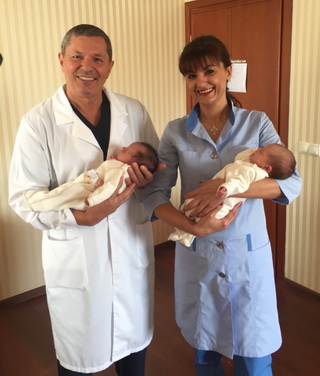FAQ

What is the success rate of the in vitro proceedure?
The percentage of achieved clinical pregnancy in our laboratory is 45-50%, where in the cases of a 5th day (blastocyst stage) embryo-transfer this number goes up to 75%.. The percentage of missed abortions after positive pregnancy is lowered down to 5%.
What are the tests, which needs to be done by the patient and her partner?
The following tests are preferable:
- The patient: whole gynecological state, ultrasound examination, examination of the fallopian tubes, series of clinical tests (hormones, blood tests etc.).
- The partner: sperm analysis and additional tests, determined by the medical staff.
- Both should be tested for: HIV (Anti-HIV-1, 2); hepatitis B; hepatitis С; syphilis.
How to know which medicine to use and when?
During the consultations the medical staff will discuss the best possible treatments and will prescribe the most appropriate medications for each individual case.
How long does the procedure take?
The approximate time of the follicular puncture itself is 10-15 minutes, however it is recommended that the patient stays in the hospital at least 3 hours for observation.
Is the procedure painful?
The follicular puncture is done under general anesthesia. There is no pain whatsoever.
Are all ova cells fertilized?
Normally around 65% of the cells are fertilized. In some patient that percentage is much higher, and in some considerably lowers.
How many embryos will be transferred?
Depending on the quality of the embryos, the type of infertility, patient’s age, as well as other factors, 1 to 3 embryos are being transferred. The chances of achieved pregnancy are higher when more, high quality embryos are transferred, on the other hand that may lead to multiple pregnancy. The multiple pregnancy can be dangerous for the health and condition of both the fetus and the mother, including risk for their life. This is the main reason why the medical staff is searching for balance when transferring embryos – on one side to increase the chances of successful pregnancy, and on the other to limit the chances of multiple pregnancies.
What happens to the rest of the embryos after the transfer?
Not all embryos continue their development through cellular division. Only the highest quality ones are chosen for the transfer, while the rest of the potential ones can be cryopreserved. The ones, proven to be unsuitable for transfer, are being disposed of.
When can the patient return to the normal daily activities such as driving, going to work etc?
24 hours after the embryo-transfer, the patient can go back to her normal daily routine. However it is highly recommended to avoid stress and strains on the body.
How long after the transfer can the patient have normal sexual relations?
24 hours after the transfer.
What can the patient do if she doesn’t have a partner or appropriate sperm donor?
The patient should consult with the medical staff about different donor programs.
Why choose “St. Lazar” hospital?
We provide the full range of services in regards to assisted reproduction, monitoring of the pregnancy and delivery of the child:
- All methods of in vitro
- Monitoring the development of the pregnancy throughout its stages
- Providing access to “future parents school” program
- Providing the facilities and accommodation for delivery of the child
- Stem cells cryopreservation, ensuring the health of your child and family
- The care for the newborn can be made considerably easier when assisted by highly professional teams

